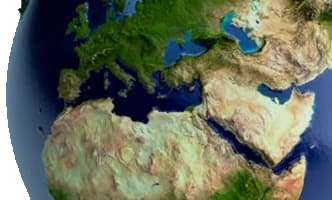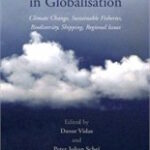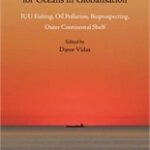The perspectives of sea-level rise and the potential legal issues that could ensue are not new for international law. Pioneering studies on the subject were published almost a quarter-century ago; however, their focus was on aspects concerning the law of the sea.[1] In recent years, several publications on international law and climate change – monographs focusing on specific aspects such as forced migration,[2] or collections addressing various other aspects involved[3] – have contributed by introducing a range of legal concerns surrounding the perspective of sea-level rise. A broader setting has now been provided for an emerging international law debate prompted by prospects of sea-level rise – but systematic study of this increasingly important issue-area for international law has remained lacking.
The International Law Association (ILA) has an important role to play here, as its principal objectives include ‘the study, clarification and development of international law’.[4] These objectives are pursued primarily through the work of the ILA’s international committees. This article traces the involvement of the ILA in the study of international law and sea-level rise and then turns to the background and reasons for the establishment of a new International Committee of the ILA, on International Law and Sea Level Rise.
The Study of Sea-level Rise within the International Law Association
The first international committee of the ILA to include, in the proposal for its establishment, the study of sea-level rise as regards the implications for international law was the Committee on Baselines under the International Law of the Sea, formed in 2008.[5] The Baselines Committee was established with a two-part mandate; as stated in the Committee’s report:
first, to ‘identify the existing law on the normal baseline’ and, second, to ‘assess if there is a need for further clarification or development of that law’. The need to identify, and possibly clarify or develop, the existing law concerning the normal baseline arises in response to possible sea level rise that has been predicted to accompany the phenomenon of climate change, and the effects this may have in particular upon low-lying, small island developing states.[6]
In its final report, issued in 2012, the Baselines Committee concluded:
[I]f current predictions of sea level rise are realized, some States will become completely submerged. The resulting deterritorialization will likely mean, among other things, a total loss of baselines and of the maritime zones generated by coastal territory and measured from those baselines. Should the issue of deterritorialization fall to be considered by the international community at least in part as a baseline issue, the existing law of the normal baseline does not offer an adequate solution. Here the Committee raises the possibility of deterritorialization in the context of Article 5 baselines, but the loss of a State’s territory to rising sea levels is not primarily a baseline or law of the sea issue. Substantial territorial loss is a much broader issue encompassing concerns of statehood, national identity, refugee status, state responsibility, access to resources, and international peace and security. This issue requires consideration by a committee established for the specific purpose of addressing this range of concerns.[7]
Following on this, a resolution of the 75th ILA Conference (Sofia, 2012) recognised that:
substantial territorial loss resulting from sea-level rise is an issue that extends beyond baselines and the law of the sea, and encompasses consideration at a junction of several parts of international law, including such fundamental aspects as elements of statehood under international law, human rights, refugee law, and access to resources, as well as broader issues of international peace and security.[8]
The 2012 Conference acknowledged that the issue would require consideration by a committee to be set up for the specific purpose of addressing this broad range of concerns.[9] Later the same year, the Executive Council of the ILA established a new International Committee: on International Law and Sea Level Rise.[10] The mandate of the Committee, valid through November 2016, is to ‘study the possible impacts of sea-level rise and the implications under international law of the partial and complete inundation of state territory, or depopulation thereof, in particular of small island and low-lying states’; and to ‘develop proposals for the progressive development of international law in relation to the possible loss of all or of parts of state territory and maritime zones due to sea-level rise, including the impacts on statehood, nationality, and human rights’.[11]
Scientific Background: Sea-level Rise and the Anthropocene
The establishment of the Committee was prompted also by current natural-science concerns about the extent and prospects of profound changes in the Earth System (including, but not limited to, climate change) and the possible ramifications for international law.
Scientists agree that one of the most certain outcomes of a warmer world is a rise in global sea levels. However, the actual figures for sea-level rise are uncertain, even for the present century. The results of process-based modelling as used for projections by the Intergovernmental Panel on Climate Change (IPCC) and those of semi-empirical model projections differ significantly, with the latter being almost twice the size of the former. In that context, the use of space remote-sensing technologies, which enables the recording and measuring of changes at different times and geographic locations can greatly assist in monitoring and better understanding current trends of sea-level rise.
Also geological information derived from Earth’s past is highly relevant. Sea-level rise is widely seen as a slow, gradually and linearly progressing phenomenon – a matter of millimetres in the course of millennia. In fact, geological evidence indicates the contrary: that some sea-level rises of the past have proceeded with significant ‘jumps’ in a relatively short timespan of centennial – perhaps even decadal – scale,[12] followed by longer periods of still-stand or slower rise. The timing of future ‘jumps’ is very difficult to predict. The rate of sea-level rise since the mid-19th century has been larger than the mean rate during the previous two millennia.[13] More immediately, global sea levels have risen on average by some 20 cm over the past century, with acceleration in the last few decades. This acceleration is projected to continue over the present century – but the pace of that 21st-century acceleration is as yet unknown.
Indeed, the Earth may be undergoing a shift from the most recent geological epoch, the Holocene (the latest interglacial interval of 11,700 years, characterised by relative environmental stability – a factor significant for the development of human civilisation),[14] to a new one – the Anthropocene, characterised by uncertainty and, possibly, a considerable degree of instability.[15] In 2009, the International Commission on Stratigraphy – the body concerned with examination and approval of changes in geological time-units – established the ‘Anthropocene Working Group’, to examine the stratigraphic basis for the Anthropo¬cene as the most recent geological time-unit. The first findings are expected in 2016.
International Law and the End of the Holocene
Core aspects of international law have been based on our experience so far, thus relying on the stability of late Holocene conditions. Due to their perceived stability, geographical features are taken as a key objective circumstance in determining the rights of states to maritime zones, as well as in resolving maritime delimitation disputes. Having a defined territory is a constituent element of statehood under international law. In a not-too-distant future, important questions may arise about the sustainability of those aspects of international law, while other aspects, such as the population of the state – and, accordingly, human rights – may gain in prominence and acquire new dimensions. All this calls for a profound re-examination of some currently-accepted paradigms of international law. Moreover, new perspectives for the development of international law will have to be considered.
Three Key Perspectives
The first perspective to be considered is the pressing importance attributed to the phenomenon of sea-level rise as a consequence of climate change. This is evident from comparison of the latest two Assessment Reports issued by the IPCC, both in the extent to which these focus on the issue of sea-level rise and in the projections presented. The IPCC estimates publicly presented in September 2013 indicate sea-level rise up to 98 cm – a considerable increase compared to the 2007 projections of up to 59 cm.[16] As explained in the IPCC 2013 Assessment Report, this discrepancy is due primarily to new and improved modelling of land-ice contributions.[17] On the basis of currently available scientific knowledge, it can be concluded that serious increase in sea levels is likely already in the present century. A review of the recent scientific literature on sea-level rise indicates that, in a world that has warmed by 4?C by the year 2100, global sea-levels would increase between 0.5 and 2 metres.[18]
The second perspective is the increasing relevance of insights from geology in the context of climate change and sea-level rise. An official change in the Geologic Time Scale, recognising the Anthropocene as a new epoch in the geological history of our planet, could critically raise awareness and highlight the magnitude of the human impact on the Earth System.[19] Whereas our generation may be the first to become aware of this shift in geological epochs, the impacts will be felt by many future generations. That should prompt fundamental reflection on our social structures already today.
And the third perspective is the relevance of the Anthropocene and sea-level rise for international law. The latter is the main legal mechanism for regulating relations between the subjects in the international community. In several core aspects, however, current international law is a system of rules resting on foundations that evolved under the assumption of ever-valid circumstances of the late Holocene. With the onset of the Anthropocene (whether officially recognised as an ‘epoch’ or not), some fundamental challenges for international law will thus be on the horizon. The perspective of sea-level rise may be among key factors prompting a thorough re-examination of core aspects of international law.
Imminent Issues for International Law
Although the actual figures are uncertain even for the current century, scientists agree that one major feature of a warmer Anthropocene world will be rising sea levels. This point is highly relevant for several core areas of international law and requires study at the junction of different parts of this branch of law.
The first part of international law that comes to mind is directly related to the sea: the law of the sea, regulating maritime entitlements of states and delimitation of their maritime zones. With rising sea levels, the baselines from which the breadth of the territorial sea is measured are likely to move landward, perhaps substantially, thereby affecting the outer limits of various maritime zones. Ultimately, sea-level rise may call into question the entire architecture of the maritime zones under today’s law of the sea. Attention has been drawn to this issue in international law literature since the late 1980s/early 1990s.[20]
In 2012, the ILA Committee on Baselines concluded:
the normal baseline is ambulatory, moving seaward to reflect changes to the coast caused by accretion, land rise, and the construction of human-made structures /…/ and also landward to reflect changes caused by erosion and sea level rise. Under extreme circumstances the latter category of change could result in total territorial loss and the consequent total loss of baselines and of the maritime zones measured from those baselines. The existing law of the normal baseline does not offer an adequate solution to this potentially serious problem.[21]
However complex, as observed by the ILA Committee on Baselines, the issue of sea-level rise extends far beyond the law of the sea and the determination of baselines and maritime zones of the coastal states.
This gives rise to fundamental questions regarding aspects of state territory and statehood under international law.[22] The concept of a defined territory, and control over it, as a constituent element of statehood in international law will have to be examined. Sea-level rise will change the legal attributes of natural features. Some small islands will disappear below the water except at low tide, and some islands which generate a range of maritime zones may be transformed into ‘rocks which cannot sustain human habitation or an economic life of their own’[23]. Are there legal limits to the artificial enhancement of such features, or to other strategies by states seeking to maintain claims to maritime zones? If low-lying coastal states or island states become uninhabitable, do they still retain the sovereign rights over maritime zones that were determined under earlier conditions? Indeed, are they to remain sovereign states once one of the basic attributes of statehood – territory – has become submerged? What are the legal parameters for adaptation strategies by such states?
The ultimate factor may be population, rather than territory itself. Small island states are likely to become uninhabitable for other reasons long before they become submerged. Insufficient fresh water, coastal erosion and increased salination of the soil, combined with other stressors like overcrowding and land scarcity, are already compromising the long-term viability of some populations. What happens if the state can no longer support its population? In legal terms, the absence of population, rather than of territory, may provide the first signal that an entity no longer displays the full elements of statehood. Refugee law and the law on statelessness are highly unlikely to offer protection in such cases, nor is there any general right for affected populations to be admitted elsewhere. What is the reach of human rights law in safeguarding the rights of individuals and communities that may be forced to move? Do they have a right to resettle as a community? How far does the concept of self-determination extend? And when would a state cease to exist?
These questions have far-reaching implications extending beyond international law, and encompassing core aspects of international security and peace, but also of national identity and human dignity. Since those developments belong to a future which we already now are able to conceive as likely, the time is ripe for the study of international law aimed at formulating proposals to deal with such prospective developments.
ENDNOTES
- See D.D. Caron, ‘When Law Makes Climate Change Worse: Rethinking the Law of Baselines in Light of a Rising Sea Level’, Ecology Law Quarterly, Vol. 17, 1990, pp. 621–653; A.H.A. Soons, ‘The Effects of a Rising Sea Level on Maritime Limits and Boundaries’, Netherlands International Law Review, Vol. 37, 1990, pp. 207–232; D. Freestone, ‘International Law and Sea Level Rise’, in R. Churchill and D. Freestone (eds), International Law and Global Climate Change (Martinus Nijhoff: 1991), pp. 109–125. See also E. Bird and V. Prescott, ‘Rising Global Sea Levels and National Maritime Claims’, Marine Policy Reports, Vol. 1, 1989, pp. 177–196.
- See especially J. McAdam, Climate Change, Forced Migration, and International Law (Oxford University Press, 2012).
- In particular, see R. Rayfuse and S.V. Scott, International Law in the Era of Climate Change (Edward Elgar, 2012); and M.B. Gerrard and G.E. Wannier, Threatened Island Nations: Legal Implications of Rising Seas and a Changing Climate (Cambridge University Press, 2013).
- ILA, Constitution of the Association (adopted at the 75th Conference, 2012), Art. 3.1; text available at the ILA website.
- The Committee on Baselines was established with the approval of the ILA Executive Council in November 2008; see Minutes of the Meeting of the Executive Council (London, 15 November 2008), p. 4. The issue of sea-level rise was later also touched upon by the ILA Committee on the Legal Principles Relating to Climate Change, in its Second Report (Sofia, 2012), at pp. 29–30 and 39–40; text available at the ILA website, at <www.ila-hq.org/en/committees/index.cfm/cid/1029>.
- ILA, 75th Conference (Sofia, 2012), Final Report of the International Committee on Baselines under the International Law of the Sea, at p. 1 (referring to the Proposal for the establishment of a new committee on baselines, paras. 4 and 7); emphasis added. Text available at the ILA website.
- Final Report of the International Committee on Baselines under the International Law of the Sea, pp. 30–31; emphasis added.
- ILA, 75th Conference Resolution No. 1/2012, ‘Baselines under the International Law of the Sea’, para. 7; text available at the ILA website.
- Ibid., Resolution No. 1/2012, para. 8.
- The Committee was established in November 2012; nomination of its Members was done by national ILA branches in two rounds in the course of 2013; and the Committee will meet for its first session at the 76th ILA Conference in Washington DC, in April 2014.
- For further information about the ILA Committee on International Law and Sea level Rise, see the ILA website.
- P. Blanchon and J. Shaw, ‘Reef Drowning during the Last Deglaciation: Evidence for Catastrophic Sea-level Rise and Ice-sheet Collapse’, Geology, Vol. 23, 1995, pp. 4–8; see also M.J. O’Leary et al., ‘Ice Sheet Collapse Following a Prolonged Period of Stable Sea Level during the Last Interglacial’, Nature Geoscience, Vol. 9, Sept. 2013, pp. 796–800.
- IPCC, Climate Change 2013: The Physical Science Basis – Summary for Policymakers, October 2013, p. 9.
- The base of the Holocene epoch as starting 11,700 (+/– 99) years before year 2000 was scientifically established only a few years ago, as ratified in 2008 by the International Union of Geological Sciences; see M. Walker, S. Johnsen, S.O. Rasmussen, et al., ‘Formal Definition and Dating of the GSSP (Global Stratotype Section and Point) for the Base of the Holocene Using the Greenland NGRIP Ice Core, and Selected Auxiliary Records’, Journal of Quaternary Science, Vol. 24, 2009, pp. 3–17.
- See J. Zalasiewicz, P.J. Crutzen and W. Steffen, ‘The Anthropocene’, in F.M. Gradstein et al. (eds), The Geologic Time Scale 2012, Vol. 2 (Elsevier: 2012), pp. 1033–1040.
- Compare figures in the IPCCs 4th Assessment Report (Climate Change 2007: Synthesis Report – Summary for Policymakers, at p. 8) with those in the IPCCs 5th Assessment Report (Climate Change 2013, note 13 above, at p. 23).
- IPCC, Climate Change 2013, note 13 above, at p. 18.
- R.J. Nicholls, N. Marinova, J.A. Lowe, et al., ‘Sea-level Rise and Its Possible Impacts Given a “Beyond 4 C World” in the Twenty-First Century’, Philosophical Transactions of the Royal Society – A, Vol. 369, 2011, pp. 161–181. However, rises greater than 1 m are deemed less likely.
- It should be borne in mind that changing the terminology by adopting a new category on a Geologic Time Scale is a different sort of ‘change’ from the actual geological changes involved between the Holocene and today. The two aspects (or meanings) of change – the one involving human definitions and perspectives, the other involving actual geological phenomena – should not be viewed as identical. The actual geological change does not depend on its formal acceptance; our awareness of it, however, may be enhanced by formalisation emerging from due scientific process.
- See note 1 above. An updated overview of the international law literature on this issue is provided in the Final Report of the International Committee on Baselines under the International Law of the Sea (note 6 above), especially at pp. 29–31.
- Ibid., p. 31.
- This and the next paragraph draw on the questions posed in the proposal to the ILA for the establishment of the Committee on International Law and Sea Level Rise, prepared in October 2012 by the present author in cooperation with co-Rapporteurs of the Committee, Professor David Freestone and Professor Jane McAdam.
- Article 121(3) of the UN Convention on the Law of the Sea.
About the author

Davor Vidas
Research Professor and Director of the Law of the Sea Programme at the Fridtjof Nansen Institute, Norway. He is the Chair of the ILA International Committee on International Law and Sea Level Rise, and a member of the Anthropocene Working Group of the International Commission on Stratigraphy. He has led many international research projects on various aspects of international law. His recent authored or edited books include The World Ocean in Globalisation (Brill, 2011), Law, Technology and Science for Oceans in Globalisation (Brill, 2010), Croatian-Slovenian Delimitation (?kolska knjiga, 2009), and Protecting the Polar Marine Environment (Cambridge University Press, 2006/2000).




